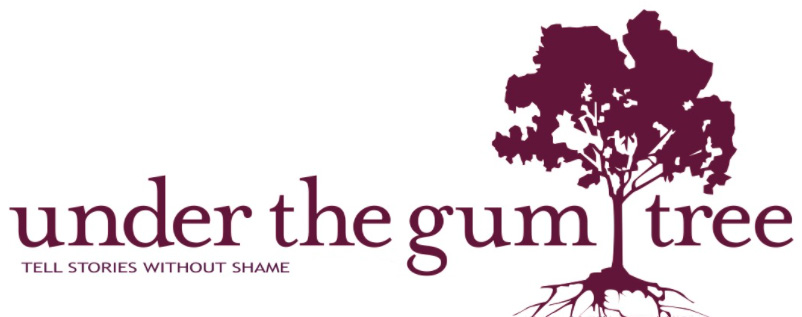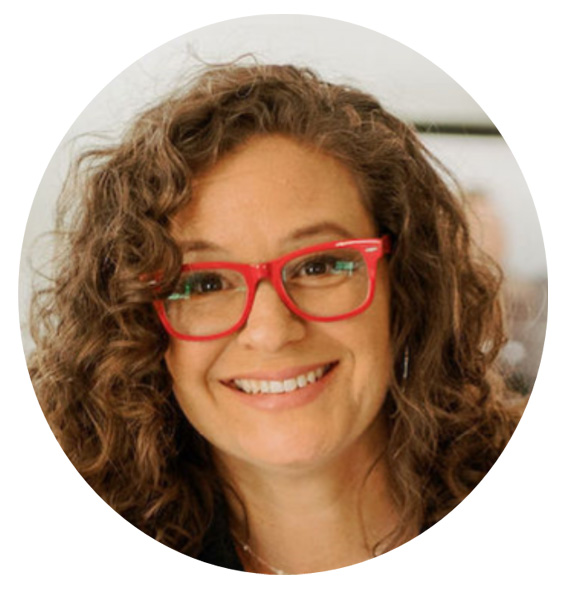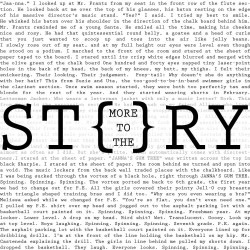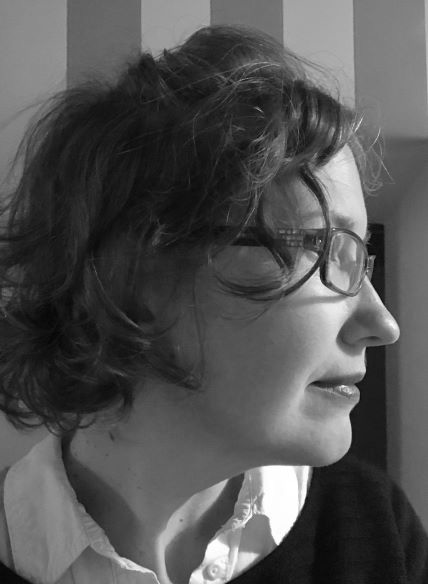
his month’s journal spotlight, Under the Gum Tree, holds a special place in my heart. It was my very first publication, three years ago. We all remember our “firsts”—but on top of it being my first writing success that made me feel legit, it had the extra cache of being in a print journal. Bonus points! I keep my copy of the 2018 summer issue on my bookshelf, and still page through it from time to time. What’s so lovely about each issue of Under the Gum Tree are the prominent spotlight features of vivid photography or lush artwork that complement the highlighted essays. It’s bound on high-quality four-color paper in a magazine that, in my opinion, makes a stunning coffee table book. Readers can also purchase a digital subscription, or a joint print and digital subscription. More details here.
We sat down with Janna Maron, founding editor and publisher of Under the Gum Tree, where she shared what the journal seeks in creative nonfiction submissions. We also chatted with Janna about her freelance editorial services, her Nonfiction Bootcamp program that will help get your memoir manuscript or CNF essay collection into fighting shape, and her podcast that brings some of today’s best CNF writers to the table to share their tips.
Before diving into our Q&A, let’s take a look at the journal’s mission statement:
Under the Gum Tree is a quarterly literary arts magazine, publishing creative nonfiction and visual art. We believe in the power of sharing a story without shame. Too much of the human experience gets hidden behind constructed facades based on what we perceive the world expects from us. Stop hiding. Live a story. Tell it without shame.
Each issue of Under the Gum Tree features a full-length CNF essay, a flash nonfiction piece under 1,000 words, several more essays grouped by themed “Departments,” and a spotlight on a visual artist. Find out what they’re looking for on their submissions page.

WOW: Hi, Janna! I’m so glad to be spotlighting you and your lovely journal to our WOW! community. When your magazine accepted my CNF essay three years ago that I’d excerpted from my manuscript, it made me believe that my memoir had legs. I’d been writing it for a few years and wondering, as so many CNF writers do, if there would be interest in my story. Isn’t that the baggage so many memoir writers carry? “Who cares? No one will want to read this. What’s so special about my experience?” I’d been submitting essays for about nine months by then, and had gotten too used to seeing the dreaded Declined status in my Submittable queue. When the Under the Gum Tree acceptance came in, it was such a high! I finally felt like I could say, “Yes, I’m a writer!” and point to something.
Janna: Thank you for sharing that experience, Ann! I LOVE hearing that. Many of our contributors often tell me that we are their first publication, which is so wonderful because so often they go on to get published with more established magazines or journals, or even to publish books, and it’s a really special thing to see where their publishing journey takes them.
WOW: First things, first: the name of your journal. I love it. It sounds serene and I visualize a writer or reader sitting under a tree, lost in words. But I know from listening to your first podcast that was taped all the way back in 2016 that a real tree is not in any way involved in this name—and certainly not a Gum Tree, native to Australia. For our readers who are curious why Janna landed on this name, listen to her very first podcast. And, stay tuned for more on her podcast, later in this interview!
On to your journal’s mission statement: “Tell stories without shame.” What does this mean to you, and how might you encourage writers to move past reluctance in order to write their truth?
Janna: This is such a common question, because people often read “Tell stories without shame” and assume it means that there is no shame in the story itself—which couldn’t be further from the truth! What we mean when we say “tell stories without shame,” is that the writers we publish are unashamed to tell their story, whatever it is. We often associate shame with trauma or negative life experiences, but shame can also be bound up in life successes if we have our identities wrapped up in them, have achieved them in less than honorable ways, misuse our position of privilege, or something even more subtle than that. But the point is that by writing, we find a way to come to terms with experiences, regardless of what they are, and the writing offers ways of dealing with shame, because the only way to heal from it is to shed light on it.
WOW: I appreciate how you list privilege and success alongside trauma or negative experiences, because life stories are multifaceted. Both good and challenging. OK, I see where Under the Gum Tree was founded in 2011. In a landscape that sees many new online journals crop up every month but then sometimes go under almost as quickly, 10 years is an impressive track record! What sparked your interest in starting a literary journal? Any exciting developments that have come out of starting it? On the flip side, I expect there may have been some challenges. Can you share any? And, why CNF writing exclusively?
Janna: My professional background started in print newspaper and magazines, and CNF is the genre that I write. When I finished grad school I was looking for opportunities to get published, and discovered that there aren’t a lot of publications that publish CNF exclusively. Sure, lots of magazines and journals publish CNF alongside poetry and fiction, but there’s only a handful of us that do CNF only. It felt like the genre was always treated as an afterthought, which I didn’t get because it’s the one that moves me the most.
It’s definitely hard to believe that it’s been 10 years, officially in October, but at the same time it also feels like we are finally just hitting our stride. It’s like the milestone has allowed us to prove ourselves as a legit publication and one that’s going to stick around. So there were definitely challenges, especially as a young journal. For example, not getting as many submissions or subscribers as other, larger titles, and balancing a quarterly production cycle with other projects, especially ones I have to maintain to, you know, make a living. But it’s always worth it, every time a new issue lands. It feels so good to hold it and share it with the contributors. And I’m continually surprised by how much more interest there is in the print version. When I started it, I for sure thought people would be more interested in digital. It’s cheaper, it’s technically more environmentally friendly (no paper), you can take all 40 back issues with you if you really wanted to. But, like you said, there’s something about the tactical experience of the paper and the full-color pages.
WOW: I could not agree with you more, Janna, when you say there’s a shortage of exclusive CNF journals. It’s disappointing, and frankly, frustrating! I’ve said to Angela, WOW’s founder, on more than one occasion that we CNF writers are at a disadvantage. There are so many more journals for poets and fiction writers ... and, don’t get me started on contests! There are very, very few contests for CNF and memoir writers, and a bajillion for fiction and poetry. Thankfully, WOW! runs a quarterly CNF contest, but it’s too bad I’m not eligible to submit. (Laughs.)
Now that you’ve been publishing for a decade, what do you think sets Under the Gum Tree apart from other journals publishing CNF?
Janna: Couple of things. First, our frequency. I think Creative Nonfiction may be the only other quarterly publication for CNF exclusively. Secondly, it’s our layout and design. I haven’t seen any other journal doing what we do with full-color throughout the magazine, full-page artwork, lots of white space to really showcase the stories we publish. And, of course, we have our departments.
WOW: Yep, I can add to your answer that one aspect I really enjoy, and what I think sets Under the Gum Tree apart, are the themed departments that appear in each issue. “Stomping Ground” brings us essays about our roots, “Sound Track” is driven by music (that’s where my essay landed), “Fork and Spoon” serves up food-driven memories, and more. You also feature one nonfiction flash in each issue. What prompted you to build your issues around these departments?
Janna: Our departments are an homage to my magazine days. Just about every consumer magazine—the ones you’d pick up at the grocery store checkout—will have departments where they cover a variation on the same topic or theme in every issue. So when I started the magazine, it really was an industry standard that I was familiar with, but it also just helped to structure and organize the magazine in a way that allowed for content diversity (by topic) in every issue. It also allows us to incorporate themes regularly, without having to do dedicated themed issues, which can be a challenge.

“... by writing, we find a way to come to terms with experiences, regardless of what they are, and the writing offers ways of dealing with shame, because the only way to heal from it is to shed light on it.”
WOW: What makes a Yes jump out at you? For our readers who may be interested in submitting to Under the Gum Tree, do you have advice to help them make an impression?
Janna: A strong confident voice. Humor. I almost always fall for humor and we don’t see it a lot. Something interesting or different with form. Specificity of detail. Cultural awareness.
WOW: Have you ever regretted passing on a piece? Ever missed out on a sub you loved because another journal accepted it ahead of you?
Janna: We do get withdrawals when something is accepted elsewhere but, honestly, in that case we haven’t gotten to it yet and so we don’t even know what we’re missing!
WOW: Turning the tables now, from the journal to you personally. Many times I ask our interviewees to describe a day in the life at their writing desks. I ask them what they’re working on and how they fill their days. Well, I took a stroll over to your website, and I think this question is pretty much covered! In addition to editing and publishing Under the Gum Tree, you’re a book editor and writing coach, you host a podcast, and you’ve published several e-books. How do you fit it all in ... and can you share your secret with me on how to get more done in my 24 hours?
Janna: Well, I don’t do it all at once, that’s for sure, and I haven’t done all of that even in a single year. If you listen to the newest season of the podcast, you’ll notice I comment on how it had been three years between seasons! So, yeah, it may seem like a lot presented neatly on my website, but really I try to take it one project at a time, one day at a time. I’m pretty tenacious, and don’t like to leave things unfinished, and I’m getting better at asking for—and hiring!—help. For example, there is no way I could do the magazine without my amazing staff of volunteers.
I also have a tendency to be very structured in my approach to my work day. I do certain things on certain days of the week, and I schedule time for those activities. For example, Mondays are admin days, Tuesdays and Wednesdays are client days where I read manuscripts, write feedback, and conduct office hours or client 1:1 meetings. Thursdays are kind of a catch-all/catch-up day, and Fridays are my day to write and work on my own manuscript. This system helps me because I know there is time for everything, so when I’m not doing client work I’m not stressing about it because I know exactly when I will do it. Also, I don’t have kids, sooo... that kinda helps.
WOW: OK, let’s take these one-by-one, starting with your editorial and coaching services. Can you topline each? What types of editorial services do you offer? How are your coaching services different ... or complementary?
Janna: My primary focus is coaching and editing for nonfiction authors. Basically, I can’t edit a book project without also coaching the author, because we often run into all kinds of blocks that come up for the author around why they aren’t getting their writing done. Or the writing is done, but now there’s something coming up that keeps them from finishing the manuscript and actually sending it out. I’m a strategic thinker, so the skills I apply to editing are also applied to problem-solving for my clients’ writing lives.
WOW: I fall into the camp of “writing is done, so why haven’t I sent out my manuscript already?” Guilty, as charged! I see where you offer a nine-month program called Nonfiction Bootcamp. How long have you offered this program, and what prompted you to start it? Nine months is quite a commitment, but I can see how it’s necessary when digging in on something as big and complex as a memoir. What excites you most about this program? Can you share any success stories that past participants have realized?
Janna: I started Nonfiction Bootcamp at the beginning of 2020 as a way to accomplish two things: 1. It allowed me to leave my full-time job and focus on this work exclusively; and 2. It allowed me to create an offering that is integrated for both my clients and me—so, instead of offering multiple 8-week workshops and constantly selling and promoting, I can really go deep with the people who work with me and my team.

WOW: Tell us about the inspiration behind your podcast, titled “More to the Story.” How do you choose your guests? And, what do you want listeners to come away with?
Janna: The podcast gave me a way to showcase both the stories and authors featured in Under the Gum Tree. I wanted to give authors an outlet to read their work, because it’s such a powerful experience to hear work read by the person who wrote it. I hope listeners learn something new about the genre or about themselves as a writer or artist, and I also hope they connect with someone new—maybe that’s me and my work, or maybe it’s one of the writers I’ve interviewed.
WOW: I so enjoyed your episode with Kati Standefer because I, too, am writing a memoir about illness. I love her point regarding the need for narrative distance. My lifesaving surgery was almost twelve years ago now, and I often beat myself up that I have not yet finished my memoir and sent it to agents. I’m so close, though! I made a promise to myself, after two professional developmental editing rounds, that I will send it out this autumn! Kati’s point about the need for distance to reach deeper reflection resonates with me, because I’m certain I needed this time to process everything.
Janna: It’s so interesting that you mention Kati’s episode, because of all the interviews I’ve done she’s the only writer who actually hasn’t been published in Under the Gum Tree! But, yes, Kati is a good friend, a wonderful writer, and a very generous teacher. Her perspective on illness and trauma writing is invaluable, and I highly recommend her book if you haven’t yet read it.
WOW: I heard you’re offering a free masterclass that starts in August called “Finish Your Nonfiction Book: 3 Shifts You Need to Make.” Can you share more details? How can writers sign up?
Janna: It’s a little bit of a sneak peek of my Nonfiction Bootcamp program in that I have a framework that I use with clients that I share in the masterclass. I won’t say too much because if I do it will reveal what those three shifts are, but I will say it’s much more mindset and heart-focused than it is craft-focused. I think a lot of times we writers can get so caught up in craft and skill, which don’t get me wrong are super important, but at a certain point we also have to learn how to trust ourselves and know that we have all we need to do the work we have set out to do.

“I wanted to give authors an outlet to read their work [on my podcast], because it’s such a powerful experience to hear work read by the person who wrote it. I hope listeners learn something new about the genre or about themselves as a writer or artist.”
WOW: Tell us about your first publication. The thrill of it. Where was it published? We’d love to read it!
Janna: My first publication was in Lunch Ticket, a piece called “Wet Glass Plates.”
WOW: Oh, I love your vulnerability in this essay, Janna! The struggle shown through your inner monologue pulls me right in. I hope you loved the results of your photo shoot! OK, we’ll end with an inspirational question. What’s the best piece of advice you’ve received in your writing career?
Janna: In college I took a copyediting class and my professor told me that I had a great editor’s eye and a knack for preserving the author’s voice, and that I should trust my ear. In the context, it was advice for my editor self, but it has served me so well as a writer, too.
My thanks to Janna Maron, Founding Editor & Publisher of Under the Gum Tree, for chatting with me. Are you proud of a CNF essay that hasn’t yet found a home? Consider sending it to Janna and her team! And, if you’re looking for motivation and accountability to get your memoir or nonfiction essay collection in solid shape, explore Janna’s Nonfiction Bootcamp!

Ann Kathryn Kelly lives and writes in New Hampshire’s Seacoast region. She’s an editor with Barren Magazine, a columnist with WOW! Women on Writing, and she works in the technology sector. Ann leads writing workshops for a nonprofit that offers therapeutic arts programming to people living with brain injury. Her essays have appeared in a number of literary journals. https://annkkelly.com/.